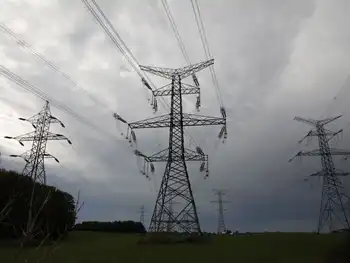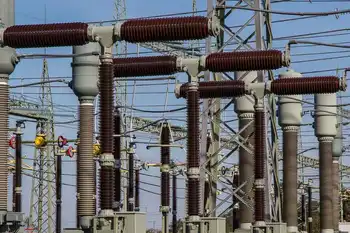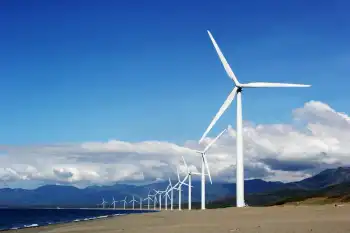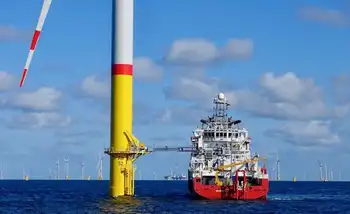Sea Snake leads in marine power race
By Reuters
NFPA 70e Training
Our customized live online or in‑person group training can be delivered to your staff at your location.

- Live Online
- 6 hours Instructor-led
- Group Training Available
Dwarfed by 180 meters of tubing, scores of engineers clamber over the device, which is designed to dip and ride the swelling sea with each move being converted into power to be channeled through subsea cables.
Due to be installed next spring at the European Marine Energy Center (EMEC) in Orkney, northern Scotland, the wave power generator was ordered by German power company E.ON, reflecting serious interest in an emerging technology which is much more expensive than offshore wind.
Interest from the utility companies is driven by regulatory requirements to cut carbon emissions from electricity generation, and it helps in a capital-intensive sector.
Venture capitalists interested in clean tech projects typically have shorter horizons for required returns than the 10-20 years such projects can take, so the utilities' deeper pockets and solid capital base are useful.
"Our view... is this is a 2020 market place," said Amaan Lafayette, E.ON's marine development manager. "We would like to see a small-scale plant of our own in water in 2015-2017, built on what we are doing here. It's a kind of generation we haven't done before."
The World Energy Council has estimated the market potential for wave energy at more than 2,000 terawatt hours a year — or about 10 percent of world electricity consumption — representing capital expenditure of more than 500 billion pounds (US$790 billion).
Island nation Britain has a leading role in developing the technology for marine power, which government advisor the Carbon Trust says could in future account for 20 percent of the country's electricity.
The government is stepping up support as part of a 405 million pound investment in renewable energy to help its ambition of cutting carbon emissions by 80 percent by 2050 from 1990 levels, while securing energy supply.
Britain's Crown Estate, which owns the seabed within 12 nautical miles of the coast, is also holding a competition for a commercial marine energy project in Pentland Firth in northern Scotland.
Besides wave power, Britain is testing systems to extract the energy from tides: private company Marine Current Turbines Ltd (MCT) last year opened the world's first large-scale tidal turbine SeaGen in Northern Ireland.
"We are often compared to the wind industry 20 years ago," said Andrew Scott, project development manager at Pelamis Wave Power Ltd, which is developing the Sea Snake system, known as P2.
Standing beside the train-sized serpent, Pelamis' Scott said wave power projects are taking a variety of forms, which he said was similar to the development of the wind turbine.
"You had vertical axis, horizontal axis and every kind of shapes before the industry consolidated on what you know as acceptable average modern day turbines."
The Edinburgh Snake follows a pioneering commercial wave power project the company set up in Portugal last September, out of action since the collapse of Australian-based infrastructure group Babcock & Brown which held a majority share.
"It's easy to develop your prototypes and models in the lab, but as soon as you put them in water, it swallows capital," said John Liljelund, CEO of Finnish wave energy firm AW-Energy, which just received $4.4 million from the European Union to develop its wave-roller concept in Portugal.
At present, industry executives say marine power costs about double that from offshore wind farms, which require investment of around 2-3 million euros per megawatt.
Solar panels cost about 3-4 million per megawatt, and solar thermal mirror power about 5 million.
Other utility companies involved in wave power trials include Spain's Iberdrola, which has a small experimental wave farm using floating buoys called "Power Take-offs" off the coast of northern Spain. It is examining sites for a subsea tidal turbine project made by Norwegian company Hammerfest Strom.
Countries developing the technology besides Britain include Portugal, Ireland, Spain, South Korea and the United States: about 100 companies are vying for a share of the market, but only a handful have tested their work in the ocean.
Privately owned Pelamis has focused on wave energy since 1998, has its own full-scale factory in Leith dock and sees more orders for the second generation in prospect.
Lafayette said E.ON examined more than 100 devices since 2001 before picking Sea Snake for its first ocean project, a three-year test: "They have a demonstrable track record... and commercial focus and business focus."
A single Sea Snake has capacity of 750 kilowatts: by around 2015, Pelamis hopes each unit will have capacity of 20 megawatts, or enough to power about 30,000 homes.
Neither Pelamis nor E.ON would elaborate on the cost of the Sea Snake, but they said the goal is to bring it down to the level of offshore wind farms.
"The challenge is more about getting to a place where we are comparable with other renewable technologies.... We want to get somewhere around offshore wind," said Lafayette.











